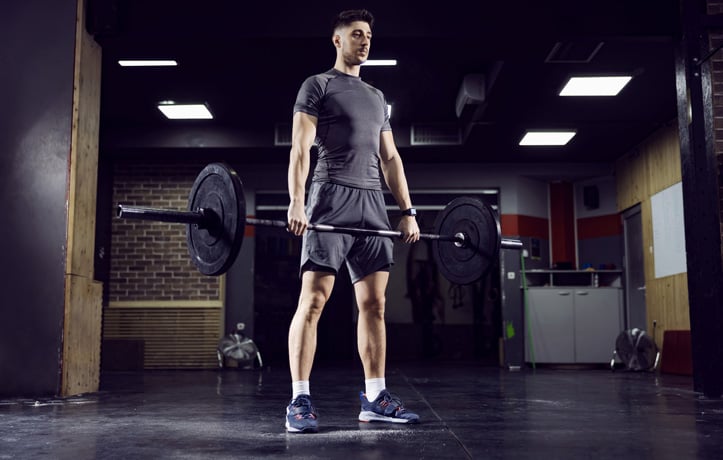Romanian deadlifts, or RDLs, have become a staple in workouts across the world. Even though the exercise itself looks simple to execute, the most common questions that trainers are asked when it comes to RDLs are: “Am I doing this right?” and “Why are they called Romanian deadlifts?”.
Read on to find out how the exercise got its name, how to perform RDLs correctly, and common mistakes to avoid when performing the move.
What is a Romanian deadlift and where does the name come from?
A Romanian deadlift is a hip-hinge pattern that works the hamstrings and glutes. It is a form of deadlift with noticeably less bend in the knee, leading to greater hamstring engagement than traditional deadlifts.
The move was introduced to the masses in the 90s by Romanian weightlifter Nicu Vlad (an Olympic and World Weightlifting champion) and his coach Dragomir Cioroslan. The two invented the move to help Nicu strengthen his back for the clean and jerk. Today, RDLs are commonly used to strengthen the posterior chain, using the core muscles to stabilize and the hamstrings and glutes to drive the movement.
How do you perform a Romanian deadlift?
Get into position: You can either lift the bar off of a rack at about hip-height or off of the floor to begin the movement (always keep the core braced for this with the spine in neutral). The first option is the easiest if you are just learning or have limited hip/hamstring flexibility.
- Step 1: Stand with your feet hip width apart holding the bar in front of you. Keep the back flat and the head in a neutral position throughout the movement. Hinge at the hips by pushing the hips back, allowing the knees to bend just slightly.
- Step 2: Keep the bar close to your body as you hinge, going as far as you can while still keeping your back flat and until the hamstrings are at full length (you will feel a stretch in the hamstrings as you hinge).
- Step 3: Once you hinge as far as you can with good form, extend the knees and drive your hips forward while contracting the glutes to finish the move.
Click here for a video demonstration of the Romanian deadlift
Common RDL mistakes to avoid
Doing this move wrong can be a real pain in the low back! As you’re learning, it can help to have an experienced lifter or trainer watching your form. You can also film yourself performing the move to see how you’re doing. As you’re learning, watch out for these common mistakes:
Rounding the back. This can happen throughout the movement, or just at the bottom of the hinge. If you notice that your back starts to round at the bottom, you might be going farther than your current flexibility allows. Remember, the goal is to always keep the back flat.
Looking up during the movement. It used to be common practice to keep the chin up during deadlift variations, but now we know it’s safer to keep the chin tucked so that the head stays in neutral to protect the spine.
Knees locked out or knees bending too much. You will have a very slight bend in your knees during an RDL, but the main movement occurs around the hips as they hinge. Too much bend and you’ll resemble a traditional deadlift or a squat (bypassing the hamstring benefits), not enough bend and you’ll be performing the stiff-legged deadlift (a different variation).
Romanian deadlifts are a great exercise for mastering the hip hinge movement pattern and strengthening the hamstrings. If you’re brand new to this move, start by practicing the move with light weight (PVC pipe or wooden rods are great) before progressively adding load over time.












